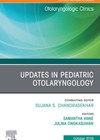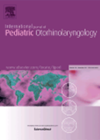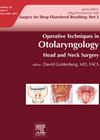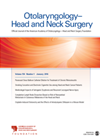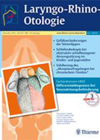
Journal Reviews
What to do if adenotonsillectomy does not cure sleep apnoea in children?
This article reviews the management of children with persistent obstructive sleep apnoea (OSA) following adenotonsillectomy (AT). Risk factors for patients to have persistent disease include obesity, being Afro-Caribbean and existing co-morbidities such as craniofacial and neuromuscular disorders. Initial assessment of...
Predicting postoperative respiratory complications following paediatric adenotonsillectomy
This systematic review aimed to compare the presence of clinical features versus the polysomnography results in predicting major postoperative respiratory complications in children undergoing adenotonsillectomy for OSA. The study was prepared according to the PRISMA checklist. Overall 22 studies met...
Stimulation for a good night’s sleep
This article was an interesting read. It is an update from the authors’ original paper printed in the NEJM in 2014 regarding the results of an implantable pulse generator (IPG) for stimulating the hypoglossal nerve in response to respiration. This...
Hypoglossal stimulation for OSA
Continuous positive airway pressure (CPAP) is a highly effective treatment for moderate-to-severe obstructive sleep apnoea (OSA), but suffers significantly from poor patient adherence. This paper reports the three-year outcomes of a prospective multicentre cohort study examining the effect of hypoglossal...
The Impact of sleep endoscopy for paediatric obstructive sleep-disordered breathing
Paediatric obstructive sleep apnoea (OSA) is not always resolved or improved with adenotonsillectomy. Persistent or complex cases of paediatric OSA may be due to sites of obstruction in the airway other than the tonsils and adenoids. Investigation of paediatric obstructive...

